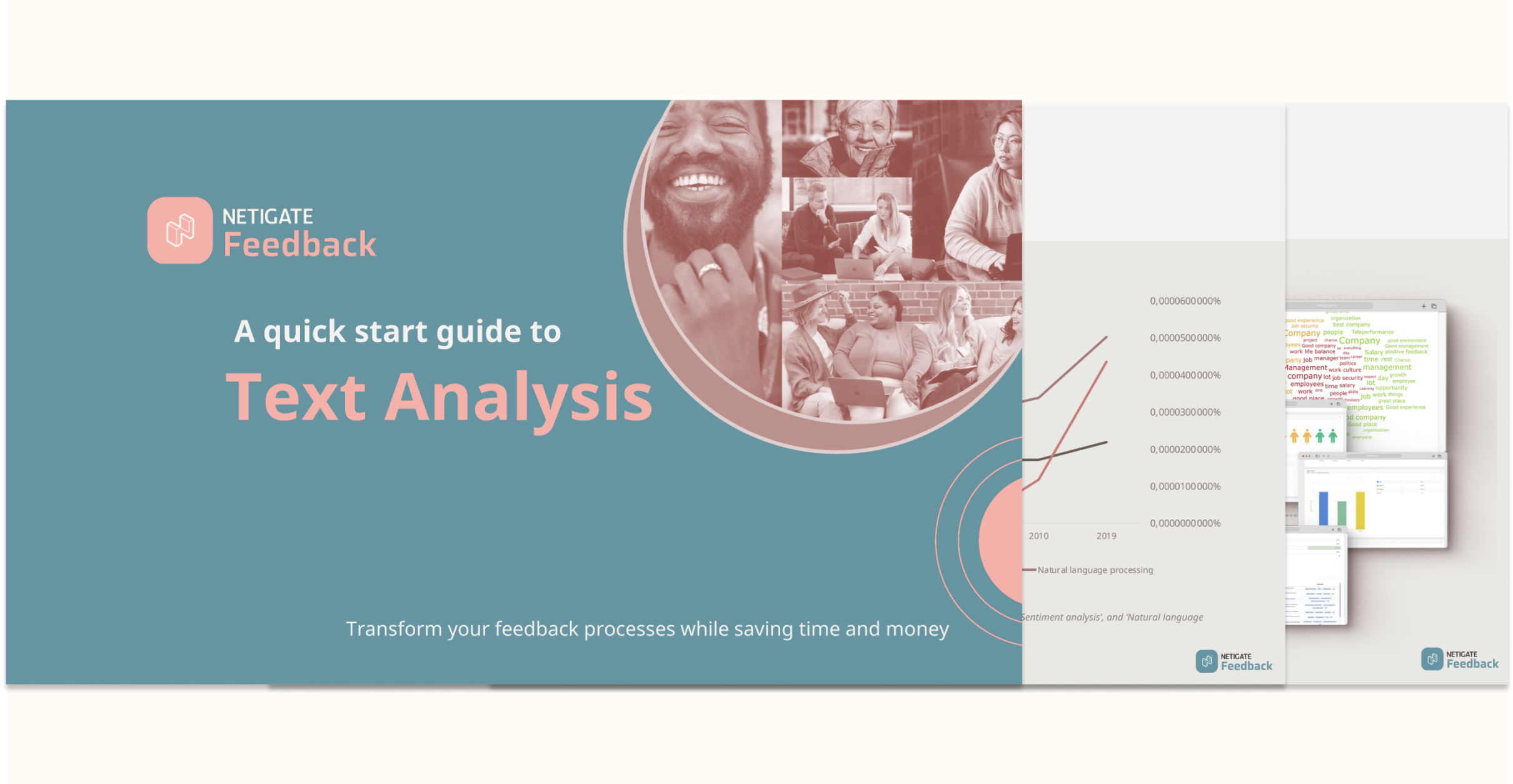Market research — or a lack thereof — can make or break your business. It is the all-seeing and all-knowing intelligence behind strategic decisions made by companies across the world. How should we market ourselves? What colour should our product be? Where will we sell it? Who will buy it?
Whether your business is new or established, global or local, market research can help you to better achieve your goals. In this article, we will look at how you can use market research to define your target audience, support the launch of new products, gain competitor insights and keep your customers coming back for more. Ultimately, you should expect to find the inspiration and confidence you need to start collecting your own valuable insights.
Using market research to define your target audience
The company that tries to appeal to everyone is setting itself up for failure. Having a well-defined target audience is the key to understanding the best way to market yourself. The more targeted your audience is, the more focused your product development and marketing strategy can be. All of this ensures that you are reaching the right people in the right way.
When you decide to release a new product or service, you should already have an idea of who your buyers or users will be. Who is already using a product or service similar to yours? Who would value the nuances of your offering? What sectors do they work in? How old are they? What might their spending habits be like? etc. These initial conclusions need to be supported with factual data, which is where market research becomes crucial.
Your website, for example, is a great place to start gathering demographic data about existing and potential customers. Through the use of widgets, forms, or surveys that are strategically placed on your site, you can gain valuable insights into your audience. You can also learn how they reached your site, why they are there, what appeals to them now and what they think could be improved.
Social media offers another useful route to identifying customers. Many platforms allow you to easily create and share surveys that can help you to gather data about the people who are choosing to interact with your business. Furthermore, social media will also allow you to pinpoint key trends in your intended market. By learning what people are talking about and interested in. With this knowledge, you can get a sense of how you can better shape or position your business to engage with your audience.
Building marketing personas with your findings
Once you have researched your target market, the next step is to put this information to good use by building marketing personas. In the context of market research, personas are blueprints of your ideal customers. Along with end users that are formed from your collected data and insights. They are a critical aspect of your research and subsequent marketing strategy. Because they ensure that your business decisions are focused and effective.
These blueprints should be made up of detailed attributes such as age, occupation, interests, motivations, buying habits, and location. You should also consider the goals, values and frustrations of your ideal customer. what issues might they be facing that your product or service could solve? How do their values line up with yours? What objections might they have to committing to your offering?
Customers are hard to win and easy to lose, so your work in this area is never truly finished. Once you have gained valuable customers, you need to do everything you can to keep them. With this in mind, you should regularly review your marketing personas, ensuring that you are keeping up to date with the values, motivations and needs of your target market.
Using market research to support the launch of a new product or service
Over 25% of total revenue and profits across different industries come from the launch of new products. More importantly, new offerings are a sign of an innovative business that is proactive rather than reactive. Before launching new products or services, however, market research is crucial to ensure that people will actually want to commit to them in their current form.
It’s easy to get caught up in the moment when you create a product or service that you’re excited about; you love it and so why wouldn’t everybody else—right? Unfortunately, this isn’t guaranteed, particularly if you haven’t spent the time and resources necessary to understand exactly what people want. Similarly, if you have an existing product and would like to make significant changes, it’s wise to validate if customers will actually like it first!
Product research with panels is an effective way of testing your product or service once you have identified your intended audience. You can gather ongoing, vital information about your product from potential customers. Coupled with using this to inform future improvements, segmenting by relevant demographics such as age, gender, and even interests.
When working with a panel or focus group, the quality of your questions is important. Not to mention it plays a significant role in the effectiveness and outcome of your research. Some elements to keep an eye on include:
Set a clear goal:
before you make use of your carefully curated panel, you need to have a clear research objective. What are you trying to find out and why? Do you have a key, overarching question that is imperative to your research? The clearer your goal is, the more valuable the feedback will be to you.
Closed vs. open-ended questions:
open-ended questions are an effective way of gathering qualitative data to help inform your product. They do require greater time and effort, however, so make sure that the frequency and placement are considered carefully.
Maintaining neutrality and balance:
questions should allow respondents to give their honest opinions. For example, avoid leading questions that only work in your favour and make sure that where multiple choice selections are offered, balanced responses are available. There is no value—particularly for you and your new product— in feedback that doesn’t leave room for constructive criticism.
The importance of a pilot test:
always aim to test your questions with a trial group before official release. Does the length feel right? Are the questions structured logically? Were there any issues with navigation? Where can improvements be made?
Once your research is complete, you will then have a wealth of data that you can use to help inform the decisions made about your product or service and have a much clearer understanding of whether it will become the success that you anticipated it to be.

Using market research to gain competitor insights
Good market research is the key to outsmarting your competition. Businesses can’t operate in a vacuum and so understanding your competitors is vital to your own success.
The first step is to familiarise yourself with the strengths of your competitors. Which can be useful in helping you to improve your own output. At a base level this will involve having a thorough knowledge of their offering, examining marketing campaigns, exploring their website and watching their movements on social media. To get a more in-depth perspective, however, you need to gain insights from the people that matter the most: customers.
Surveys and opinion polls are both good ways of getting to know the competitive landscape.
By reaching out to customers—yours and competitors’—you are able to find answers to key questions such as:
- How does the market perceive our competitors?
- What is the market response to our competitors’ products and pricing models?
- In public opinion, how are we faring against our competitors?
- Are our competitors planning any new products, and what impact will they have on ours?
- What are the current market and economic trends, and are there any signs that they are changing?
- Is anything happening in parallel industries that could impact our product or service?
By listening to the voice of the market, you are able to keep an eye on existing companies and products as well as those that may be gaining traction. Furthermore, metrics like the Net Promoter Score (NPS) offer a valuable overview of how you are performing compared to others in your industry.
Finally, it’s important to pay close attention to your competitors’ weaknesses. While it might be tempting to celebrate their failures, the smartest move is to analyse them. What went wrong? Where did it go wrong? What mistakes were made in the run-up to this? Identifying all of these factors will allow you to take the steps necessary to proof your business against similar failings in the future.
Retaining customers and improving satisfaction with market research
Now you’ve done your research, you have a clear target market and your product or service has found success. Great! Far from becoming complacent, however, now is the time to start considering how you are going to retain your customers and their business. After all, loyal customers will spend more with you over time, recommend your business to others and ultimately help to increase profits.
In today’s global marketplace, where customers are inundated with more choice than ever before, it’s wise to have a secure understanding of what keeps your customer base happy and how you can keep it that way.
Often referred to as VOC or ‘voice of the customer,’ research that focuses on customer satisfaction comes in many forms, from one-off surveys and opinion polls to more in-depth focus groups.
The Net Promoter Score (NPS), for example, is one of the most ubiquitous—and simple— customer satisfaction surveys that can quickly give businesses an insight into the impression they leave on their customer base. The NPS survey is also an excellent springboard for further investigation into how to maintain continued loyalty to the business.
Remaining relevant is considered a key factor in not only attracting new customers but keeping existing ones. With this in mind, leverage research to keep abreast of changes in the current needs, priorities and values of your target market. A successful business is one that remains adaptive, open-minded and willing to take feedback onboard. People know when businesses aren’t listening, and nothing will increase customer churn rate faster than valuable feedback falling on deaf ears.
Ultimately, it’s imperative that you understand how your customers are evolving, so that you and your offering can evolve with them.
Embracing the power of digital platforms in market research

Digital platforms have completely transformed the way market research is conducted. With the growing ubiquity of digital and mobile technologies in our day-to-day lives, proactive businesses will be eager to embrace the new possibilities.
Twenty years ago, market research relied on traditional methods like face-to-face or telephone interviewing. Even though, these methods have pitfalls such as higher costs, time and effort required. The introduction of social desirability bias is also a significant drawback of in-person interviewing, where the inclination to answer favourably could skew the accuracy of any feedback.
Digital platforms, on the other hand, allow us to capture real-time, honest market insights from our target audience. For example, a survey included immediately following an online purchase will mean we have instant and more reliable access to the thoughts and behaviours of our customers. This is in stark contrast to more traditional methods like telephone interviewing after the fact. Where the business-to-customer interaction has likely long passed, and recollection is misty at best.
The speed at which market research can now be conducted is also impressive. It would be entirely possible to design a questionnaire, release it and then collate the results, all in the space of a day. Of course, the more time spent planning your research the better. But there’s no denying the acceleration available to you with digital.
Furthermore, the ability to access larger sample sizes is a clear advantage of digital and mobile market research methods. With smartphone use rapidly increasing across the world, you now have access to more people than ever before, which makes it much easier to branch out into more specific and nuanced research.
Most importantly, digital platforms make market research more accessible than ever before. Meaning you can have the autonomy to conduct your own market research and analyse feedback yourself.
Your next steps
If you’re interested in taking your business to the next level with the backing of improved market research, don’t hesitate to get in touch with us. From product research to opinion polls and website feedback. Netigate gives you the tools your business needs to harness the power of data.





